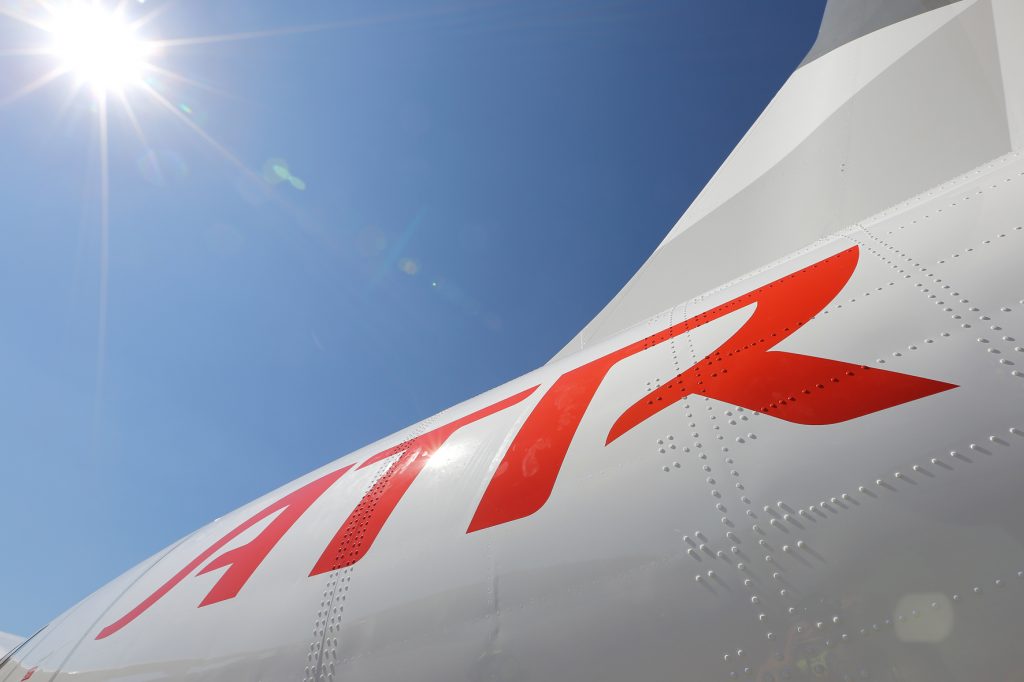
ATR head of Asia Pacific Christophe Potocki said he expects the recent decision by Bombardier to launch a 50-seat regional jet will have little impact on that segment of the market.
Rather, Bombardier’s CRJ550 was more about meeting the specific requirements of scope clauses between airlines and pilots unions in the United States, he said.
Potocki said the ATR line-up of turboprops was in a “totally different league” in terms of operating economics to the CRJ550, which would have a type certificate based on its existing CRJ700.
The ATR line-up comprises the 72-600 and 42-600. The 72-600 seats 68 in a standard one-class configuration, while the 42-600 is designed to carry 48 passengers. There are also freighter and mixed cargo/passenger variants.
Closer to home, Air New Zealand is the one of the largest ATR operators in the world, with six 72-500s and 21 72-600s flown by its Mount Cook Airline subsidiary, the airline’s website showed. It also has eight more 72-600s on order.
Meanwhile, Virgin Australia has eight 72-600s and Toll Group also operates ATR turboprop freighters.
Potocki said the Australian market had been “quite dynamic” over the past two years, with the uptick in activity in the resources sector reopening opportunities in the fly-in/fly-out (FIFO) segment alongside growth in e-commerce raising demand for more nimble freight transport.
“The outlook for the coming five years, looking at the Australian market, I think is quite positive,” Potocki said.
“That’s why ATR has allocated quite a lot of resources for us to follow up and be there at the right time for customers.”
In November 2018, Air New Zealand and ATR announced a joint project to look at the potential of hybrid technology to power regional aircraft.
The partnership was also designed to consider what ground infrastructure and regulatory framework was required to get the initiative off the ground.
Potocki said there a lot of work is still needed to make a hybrid commercial passenger aircraft reality.
“Looking at hybrid and electric technology, aircraft of the size of the ATR, the technology is still a few decades away most probably. But looking at smaller modules, maybe it would be an easier start for electric and hybrid aircraft.
“We are definitely working with Air New Zealand, exchanging concepts and listening to them.”
Potocki noted one of the biggest challenges of battery-powered aircraft is the need to design an airframe where the landing weight is the same as the takeoff weight.
“That’s a total different design philosophy compared with existing jet fuel powered aircraft,” Potocki said.
ATR booked 52 firm orders in calendar 2018, while it delivered 76 aircraft. Looking ahead, the company said recently expected to deliver 78 aircraft in calendar 2019.

















David
says:Jets are way to expensive to operate on sectors less than 90 min cf. Turboprops & virtually no faster. Atrs are also quiet
Chris
says:The -600’s are quieter than the -500’s. The -600’s could be quieter still will more sound proofing.
James
says:Hevilift also operate the 72-500 and I believe a 42-500 out of Brisbane.
Max
says:In my experience the ATRs are far noisier than competing turboprops, even noisier than the good old Fokkers.
Chris
says:I wonder is ATR is going to release the ATR42-600S designed for short landing/take off operations?. They have talked about but nothing has happened.